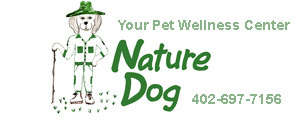- Do you subscribe to Dharma Dog Training’s Newsletter? You should.
- A Unique Campaign from The Humane Society of the United States
- Rabid bats in Omaha- Stay safe, prepared with these tips
- Springtime Activities in Omaha
- Mill Dog Monthly from Bailing Out Benji
- World Spay Day, Legislative Alert in Nebraska
- Attend the Nebraska Rescue Council’s monthly meeting this Saturday
- Five Hard-to-Ignore Reasons to Adopt!
- Paws in Pink to Benefit Breast Cancer Foundation
- VCA, Inc. Acquires MidWest Vet Specialists from Kansas State University
Crate Training Help from Dharma Dog Training

It’s Train Your Dog Month and we’re always ready to relay helpful dog training information from local trainers, like Kelley McAtee and Dharma Dog Training, to our readers. In this post, learn a bit about your pup and use the tips to properly utilize your crate.
Dogs are den creatures by nature and they need a safe, secure place to go to when life gets overwhelming. Kennel training allows your dog to practice a calm state of mind and is a life skill. “We have seen kennels have dramatic effects on a dog’s life,” says McAtee, “helping them to remain sane, safe, and in their home.” Kennels are helpful for newly-adopted dogs or dogs just entering a home environment, limiting the amount of responsibility left on a dog in a new space. “Crates are helpful in an emergency situation or a veterinarian visit and will keep dogs from fighting or seriously injuring themselves or others when you are not home. Remember, McAtee says, “Kennel training must be done when you are home with your dog or at night while you are sleeping.” The reason for this is that you must be present if your dogs behavior changes so you can help them through it and they can practice being in a safe space while you are home.
A helpful tip- Getting a camera or setting up your tablet or phone camera can help so that you can watch what is happening when you leave the room or house.
Here are some other must-know crate training tips from McAtee:
- Start by picking the right size kennel. Your dog should be able to get up turn around comfortably and not hit their head on the top of the kennel. We like the black wire kennels for indoor stationary kennels, or plastic kennels for traveling.
- Pick a calm, quiet spot for the kennel, only put in blankets or beds if the dog is not going to chew them. We like primopads.com for safe padding in the kennel that is pretty indestructible. Same goes for putting a blanket over part of the kennel as more of a “den-like” space.
- Many dogs panic when being left in a kennel and if this is the case you need to start with a slip lead on the dog and leading the dog in and out of the kennel until they feel calm.
- Once they do this without stress, incorporate a SIT in the kennel and then call them out. Repeat this until the dog feels calm and does this without stress.
- Next, you want to incorporate a DOWN in the kennel, and you want to do this until your dog gets calm and does a down without stress. If a massage inside the kennel helps your dog then you can add this.
- You can begin by closing and opening the door for short periods if they can still hold a down. You can use treats for COUNTER CONDITIONING if your dog will take them and mastering SITS, DOWNS and PLACE outside the kennel is essential to get your dog to be great at kenneling.
*Note: if your dog can hold place on a bed (that serves as a MENTAL KENNEL) outside of the crate, then they will have a greater chance of succeeding INSIDE the crate. Kennel training can be very STRESSFUL so remember it is important to start when you are home with your dog or at night while you are sleeping so they get used to the kennel and start to view it as a positive space. If your dog is trying to injure themselves by breaking out of the crate, or becomes very stressed in the crate, we recommend contacting us for assistance.
Have more questions? Want Kelley McAtee and company to help you along the way? Check out Dharma Dog Training’s website here.
Related Posts
Latest News
-
Join Us at Pick A Pooch 2025: A Fun-Filled Weekend for the Whole Family
A Fun-Filled Weekend for Pet Lovers and Families Alike Mark...
- Posted 1 year ago
- 0
-
Beardmore Presenting Sponsor At This Years Pick-A-Pooch event
🐾 We are thrilled to announce that Beardmore Subaru is...
- Posted 3 weeks ago
- 0
-
How Having A Pet Can Change Your Life
Having a pet can open your heart in ways that...
- Posted 2 months ago
- 0
-
How To Improve The Life Of Your Senior Pet
Do you have an elderly fur baby and want to...
- Posted 3 months ago
- 0
-
Springtime Activities To Enjoy With Your Furry Friends
Are you preparing for warmer weather and want some ideas...
- Posted 4 months ago
- 0
-
Pros And Cons Of Microchipping Your Pets
Have you considered whether your pets should be microchipped and...
- Posted 4 months ago
- 0
-
The Best New Fun Toys For Dogs And Cats
The Best New Fun Toys For Dogs And Cats Did...
- Posted 5 months ago
- 0
-
Heartfelt Ways To Show Your Pet You Love Them
Did you know there are more ways to show your...
- Posted 6 months ago
- 0























You must be logged in to post a comment Login